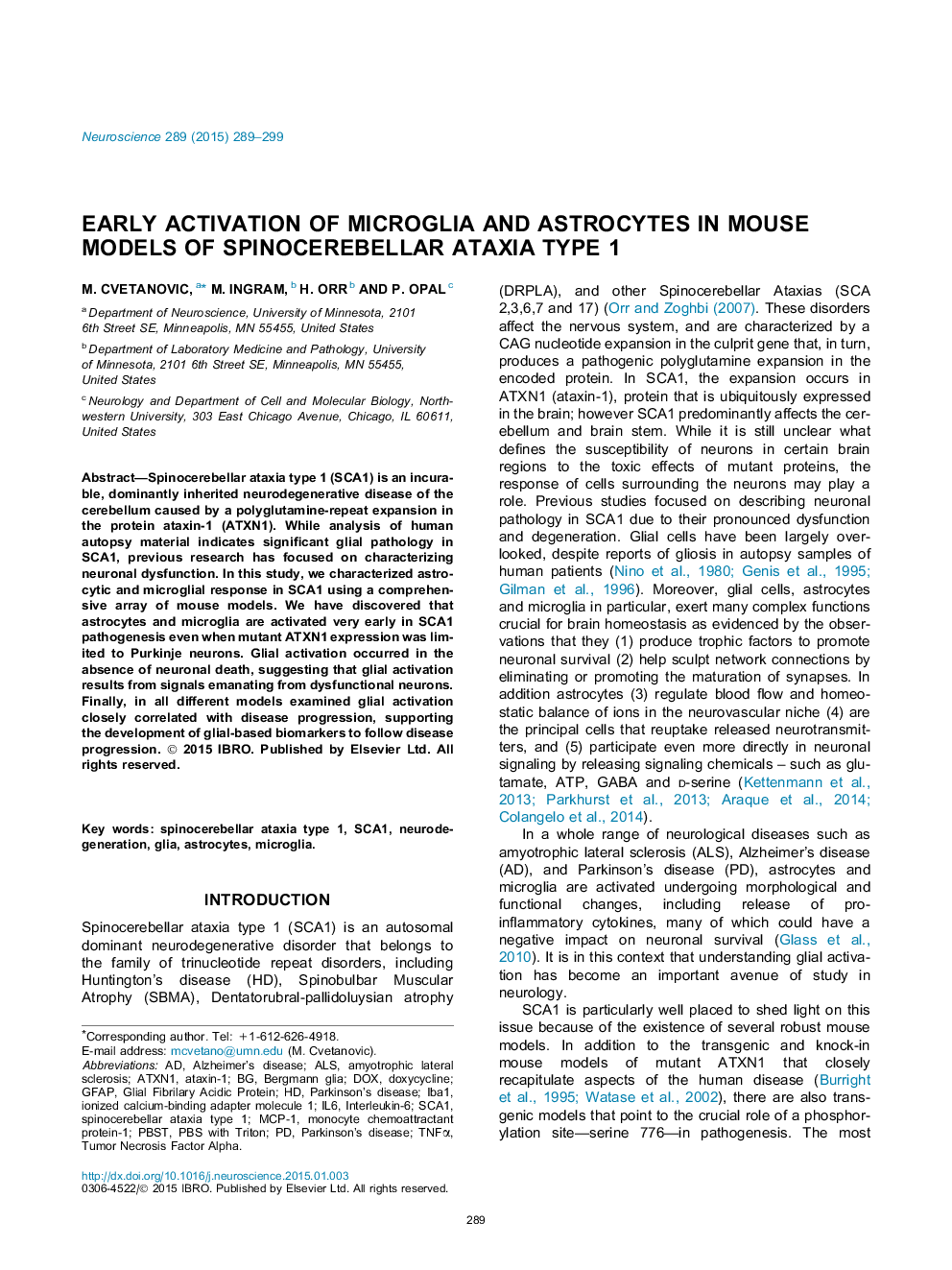| Article ID | Journal | Published Year | Pages | File Type |
|---|---|---|---|---|
| 4337542 | Neuroscience | 2015 | 11 Pages |
•Glial activation occurs early and precedes neuronal death in SCA1 animal models.•Glial activation correlates with SCA1 pathology in a spatio-temporal manner.•Mutant ATXN1 expression in glia is not required for their activation.•Microglial activation and inflammation correlates with neuronal loss in SCA1.•Glial activation arrests/reverses after ending of neuronal ATXN1[82Q] expression.
Spinocerebellar ataxia type 1 (SCA1) is an incurable, dominantly inherited neurodegenerative disease of the cerebellum caused by a polyglutamine-repeat expansion in the protein ataxin-1 (ATXN1). While analysis of human autopsy material indicates significant glial pathology in SCA1, previous research has focused on characterizing neuronal dysfunction. In this study, we characterized astrocytic and microglial response in SCA1 using a comprehensive array of mouse models. We have discovered that astrocytes and microglia are activated very early in SCA1 pathogenesis even when mutant ATXN1 expression was limited to Purkinje neurons. Glial activation occurred in the absence of neuronal death, suggesting that glial activation results from signals emanating from dysfunctional neurons. Finally, in all different models examined glial activation closely correlated with disease progression, supporting the development of glial-based biomarkers to follow disease progression.
